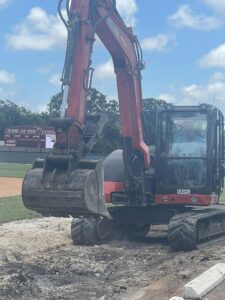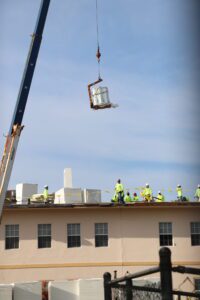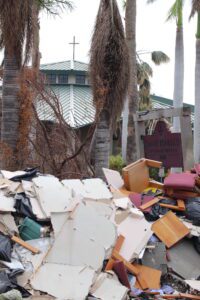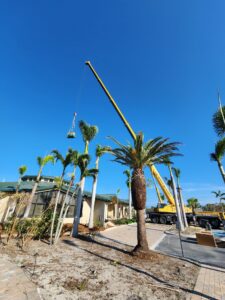It has been one year since two hurricanes inundated Boca Grande and while the tranquil island community seems to be on the road to recovery, many scars remain.
Our Lady of Mercy Parish was severely impacted by more than 3 feet of storm surge during Hurricane Helene on Sept. 26, 2024, and then by 5 feet of surge on Oct. 9 when Hurricane Milton roared ashore.

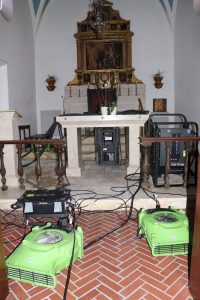
Cleanup and mitigation work was well underway following Helene when Milton wiped away that progress and caused additional damage. In the church, the water reached the top of the pews and spread into the sanctuary and sacristy. In addition, Milton’s water reached the rectory. While the water did not destroy the flooring, it did damage the garage and crawlspace where various utilities were located. There was also roof damage.
Fortunately, the Parish Spirit Center, which was completed in 2022 and built high enough to stay dry, was spared. Masses were celebrated in the Spirit Center until the church repairs were sufficiently completed by April 2025.
“We were back in for the Easter Vigil; the perfect time to be back in our sacred space,” said Father Anthony Hewitt, Pastor of Our Lady of Mercy, following Mass on Sept. 28, 2025. “It has been a long year, but Our Lady of Mercy is doing well.”
The repairs required removing the entire contents of the church, including the pews, altar and reredos (the expansive back wall piece of the altar). Each item was accessed and, when possible, salvaged. The Parish needed art restorers and specialists to care for the damage to the paintings, statues, and reredos.
“It was an amazing process,” Father Hewitt said. “Even the pews (made of hardwood) were saved and refinished.”
Some furniture in the sacristy was lost, as were the piano and organ. A new piano has been installed but the organ is on order.
Father Hewitt credits the support of Bishop Frank J. Dewane, the Diocese of Venice Buildings and Construction Office and the various local contractors for how quickly the church repairs were completed.
The disruption to the island community from the storms was extreme and the rebuilding continues throughout the area.
One couple who attended Mass on Sept. 28 said the damage to their home was shocking but that their faith and the knowledge that Our Lady of Mercy was still operating gave them the hope and courage to rebuild.
“Our little church was a mess, but we went to Mass and came closer together as a community because everyone was dealing with the same recovery. It was a sign of resilience for us all as the church repairs were taking place, and people and businesses became whole, we all felt relief. Having Mass in the church again was wonderful. It marked an important milestone.”
Our Lady of Mercy was one of several Parishes within the Diocese to experience damage from the 2024 hurricanes. Most damage to Parishes and Catholic schools has now been repaired, however St. Bernard Parish in Holmes Beach and Sacred Heart Parish in Punta Gorda both had extreme storm surge damage, most significantly to their Parish Halls. Repairs continue on both Parish Halls.







